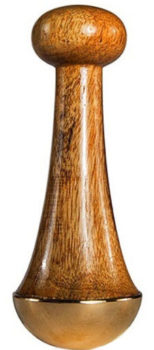Globally, endometriosis affects approximately 10% (190 million) of reproductive-age women and girls. Yet, despite being a common condition, endometriosis remains difficult to diagnose and often goes undetected, making it imperative to understand the condition, its symptoms, and how to manage them.
What is endometriosis?
Endometriosis is a condition that causes tissue similar to the lining of the uterus to grow in the wrong places, including in the fallopian tubes, intestine, outside of the uterus, ovaries, and within the pelvic cavity.
Unlike within the uterus, when this tissue grows in other areas, it does not shed during a menstrual cycle, causing a buildup of tissue. When this occurs, it can cause a series of painful symptoms, which can be related to other conditions, including adhesions, fibrosis, as well as increased inflammation. Additionally, when this tissue grows outside of the uterus, it can cause scar tissue, which can fuse your organs and lead to further pain and discomfort.
There is no known cause of endometriosis, though some theories include a blood or lymph system transport, direct transplantation, wherein endometrial cells attach to abdomen walls or other areas of the body after surgeries including a C-section or hysterectomy, genetics, or reverse menstruation when the endometrial tissue goes into the abdomen and fallopian tubes instead of exiting the body during menstruation.
What are the symptoms of endometriosis?
There are an array of symptoms associated with endometriosis, which include difficulty getting pregnant, lower abdominal pain, pain with menstrual cycles, as well as pain with sexual intercourse. Pain in the abdomen, lower back, and pelvic region is the most common symptom associated with the condition, ranging from mild to intense. Other symptoms include heavy bleeding during your periods, spotting between periods, and painful bowel movements.
However, it’s also possible for those who suffer from endometriosis to experience no symptoms at all.
How can you test for endometriosis?
Like many conditions, testing for endometriosis begins with identifying symptoms and discussing them with a healthcare provider. There are several tests that can be performed to search for physical identifications of endometriosis in the body, including a pelvic exam, wherein a doctor manually examines the area for cysts on the reproductive organs or scarring behind the uterus. Other tests include an ultrasound, which won’t necessarily tell your doctor definitively if you have endometriosis but can identify cysts associated with the condition. Individuals may also receive an MRI for more detailed images of the tissues and organs in the body, which can be used for surgical planning, as well as a laparoscopy, which will allow a surgeon to view inside the abdomen to identify any signs of endometrial tissue located outside of the uterus.
How to care for endometriosis holistically
While there’s no cure or prevention plan for endometriosis, there are a variety of treatments and lifestyle changes to help treat and manage the symptoms associated with the condition. For some, ibuprofen and acetaminophen can help manage the pain, while surgery to remove the patches of tissue or surgery to remove the part of the affected organ is another treatment method.
Treatment can also be approached from a combined medical and alternative therapy methodology. Acupuncture is recommended to help manage pain as well as to promote relaxation. Herbal medicine is also another approach for many, with practices ranging from ayurveda, Chinese herbs, homeopathy, and naturopathy. Both physical therapy and massage can also aid in pain management in an effort to decrease stress, improve muscle tone, and overall increase quality of life.
Your diet can also play a role in managing endometriosis symptoms, as inflammation and high levels of estrogen can cause a flare-up and make symptoms of the condition worse. While women need estrogen, an excess can cause discomfort with endometriosis symptoms. To help aid in digestion and shed excess estrogen through bowel movements, a diet that’s high in fiber can help move the process along – however, this should be done gradually if it’s not already part of your routine, as too much fiber at once can cause bloating and digestive discomfort.
Anti-inflammatory foods are also key to keep in mind, including fatty fish, nuts and seeds, and plant oils, as well as monounsaturated fats such as avocado and peanut butter. Magnesium and zinc are also three important minerals to keep in mind with the diet, with magnesium helping to relieve cramps and zinc helping to regulate menstrual cycles. There are also a series of foods that can aggravate endometriosis symptoms, including alcohol, caffeine, fatty meats, processed foods, as well as sugary drinks.

















